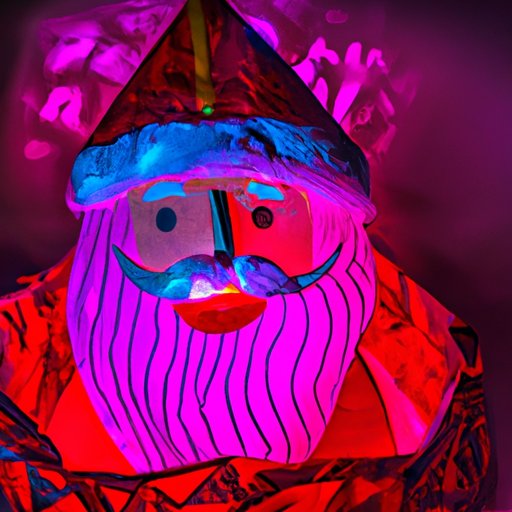Unwrapping the Origins: Exploring the Journey of Santa Claus
As the holiday season approaches and the air becomes filled with festive cheer, one figure stands out in the minds of children and adults alike: Santa Claus. We all know the jolly old man in the red suit who brings gifts to good children on Christmas Eve. But have you ever wondered where Santa Claus came from? In this article, we will delve into the origins of this beloved figure, unwrapping the layers of mythology, history, and tradition that have shaped Santa Claus into the magical character we know today.
From Folklore to Legendary Status: The Evolution of Santa Claus
The roots of Santa Claus can be traced back to ancient folklore and mythology. The character of Santa Claus, as we know him today, has evolved over centuries – a blend of different legends and cultural influences.
Early roots of Santa Claus can be found in the stories of Norse mythology, particularly the figure of Odin, the Norse god who traveled on a magical flying horse and rewarded children who left him offerings. Over time, various other legends and characters – including Sinterklaas, the Dutch gift-giving saint, and Father Christmas, the English embodiment of holiday cheer – contributed to the evolution of Santa Claus.
Awakening the Magic: Tracing Santa Claus’ Enchanting Origins
While folklore laid the groundwork for Santa Claus, it was the historical and cultural origins that truly awakened the magic of this enchanting figure. One key influence on the modern Santa Claus is Saint Nicholas, the 4th-century bishop known for his generous nature and gift-giving spirit. Saint Nicholas became a beloved figure throughout Europe, with various countries establishing their own traditions and customs surrounding him.
The iconic image of Santa Claus that we recognize today was popularized in the 19th century, thanks in part to the publication of Clement Clarke Moore’s poem, “A Visit from St. Nicholas,” which depicted Santa Claus as a jolly, rotund man flying on a sleigh pulled by reindeer. The influence of Moore’s poem, along with the spread of Christianity and the rise of consumer culture, helped solidify the image of Santa Claus as a figure of gift-giving and joy.
Legends, Myths, and History: The Fascinating Story Behind Santa Claus
Throughout history, various legends and myths have sprouted around the origins of Santa Claus. One popular tale is that Santa Claus resides in the North Pole, where he and his army of elves prepare gifts for children all year round. Another myth suggests that Santa Claus has a naughty or nice list, with presents reserved for those who have been well-behaved.
Historical figures and events have also played a role in shaping the Santa Claus narrative. For example, the story of the three wise men bringing gifts to the baby Jesus is often connected to the tradition of gift-giving during the Christmas season. Over time, different cultures incorporated their own customs and legends into the Santa Claus narrative, making it a rich tapestry of stories and beliefs.
Unveiling the Origins: Discovering the Real Santa Claus
While Santa Claus has become a figure of myth and legend, there is evidence to suggest the existence of historical figures and traditions that influenced his development. Saint Nicholas, as mentioned earlier, was a real person who lived in the 4th century and was known for his acts of charity and kindness.
Other traditions and customs – such as the Germanic figure of the “Wild Hunt,” a magical procession of spirits, and the 17th-century Dutch concept of Sinterklaas – combined with the stories and folklore surrounding Saint Nicholas to create the foundation of Santa Claus.
The Evolution of our Beloved Santa Claus: From Saint to Global Icon
Over the centuries, Santa Claus has evolved from a religious figure to a global symbol of generosity and joy. The commercialization and popularization of Santa Claus have played a significant role in shaping his modern-day image. Advertising campaigns, department stores, and media portrayals have embraced and perpetuated the image of Santa Claus, making him a central figure in the celebration of Christmas worldwide.
Yet, underneath the commercialism lies the enduring appeal and cultural significance of Santa Claus. The spirit of Santa Claus – generosity, kindness, and the joy of giving – resonates with people of all ages. The ability of Santa Claus to bring smiles to children’s faces and foster goodwill within communities is what truly makes him a beloved and iconic figure.
Conclusion
In this exploration of Santa Claus’ journey, we have unwrapped the various layers that make up the origins of this beloved figure. From folklore and mythology to historical figures and traditions, the evolution of Santa Claus is a fascinating tale of cultural amalgamation and enchantment.
As we prepare to celebrate the holiday season, let us not forget the magic and wonder that Santa Claus represents. Let us embrace the spirit of generosity, kindness, and joy that Santa Claus embodies and continue to spread that magic throughout the world.
Thank you for joining us on this journey of discovery, and may your holiday season be filled with the warmth and joy of Santa Claus.
(Note: Is this article not meeting your expectations? Do you have knowledge or insights to share? Unlock new opportunities and expand your reach by joining our authors team. Click Registration to join us and share your expertise with our readers.)
